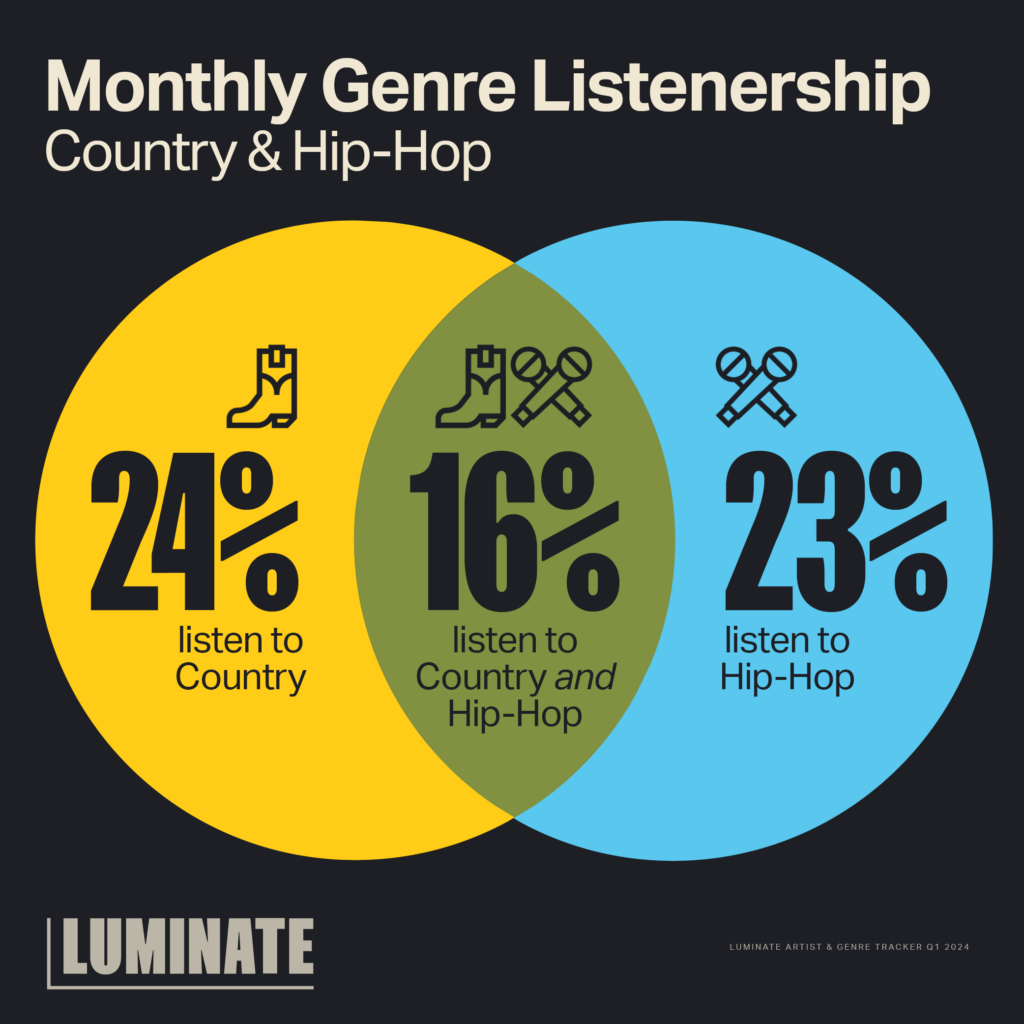Country music, once considered the soundtrack of rural America, Streaming is experiencing a vibrant resurgence among younger audiences, particularly those who stream music. This revival is reshaping the genre, blending traditional twang with modern influences, and capturing the attention of Gen Z and millennial listeners. From TikTok viral hits to sold-out arena tours, country music is proving it’s not just for older generations anymore. Here’s a closer look at why this genre is striking a chord with younger streaming demographics and what’s fueling its comeback.

A New Generation Discovers Country Music
For decades, country music was often associated with older audiences, small-town life, and themes of heartbreak, trucks, and whiskey. While these elements still hold a place in the genre, today’s country music is evolving to reflect the tastes and experiences of younger listeners. Artists like Morgan Wallen, Luke Combs, and Kacey Musgraves are leading the charge, blending country with pop, hip-hop, and indie vibes that resonate with streaming-savvy audiences.
Streaming platforms like Spotify, Apple Music, and YouTube have played a massive role in this shift. According to industry reports, country music streams have surged by over 20% annually among listeners aged 18-34 since 2020. Playlists like Spotify’s “Hot Country” and “New Boots” are introducing younger fans to both established stars and rising talents. These platforms use algorithms to recommend songs based on listening habits, exposing pop and hip-hop fans to country tracks that share similar beats or storytelling styles.

Social media has also been a game-changer. TikTok, in particular, has become a launchpad for country artists. Viral challenges featuring songs like Walker Hayes’ “Fancy Like” or Zach Bryan’s “Something in the Orange” have racked up millions of views, turning casual listeners into devoted fans. These short, catchy clips make it easy for younger audiences to discover and share country music, breaking down stereotypes about the genre being outdated or niche.
Why Younger Audiences Are Hooked
So, what’s drawing younger demographics to country music? For starters, the genre’s storytelling remains a powerful draw. Country songs often tell relatable stories about love, loss, and chasing dreams—universal themes that resonate with people of all ages. Gen Z, in particular, values authenticity, and country music’s raw, heartfelt lyrics feel genuine in a world of polished pop anthems.

The genre’s evolution is another factor. Modern country artists are experimenting with sounds that appeal to younger ears. For example, Morgan Wallen’s blend of country and trap beats or Chris Stapleton’s soulful, rock-infused ballads bridge the gap between traditional country and contemporary genres. This fusion makes country music feel fresh and accessible to those who might not have grown up listening to Johnny Cash or Dolly Parton.
Cultural shifts also play a role. As urban and suburban youth embrace “country” aesthetics—like cowboy boots, flannel shirts, and festivals like Stagecoach—country music becomes a natural soundtrack. This trend, often dubbed the “yee-haw agenda,” has made the genre feel trendy rather than old-fashioned. Younger fans are also drawn to artists who reflect their values, such as Kacey Musgraves, whose progressive lyrics about self-acceptance and social issues align with Gen Z’s worldview.
The Role of Streaming Platforms
Streaming platforms have democratized music discovery, and country music is reaping the benefits. Unlike traditional radio, which often caters to older listeners, streaming services allow users to explore genres outside their comfort zones. Playlists curated for “chill vibes” or “summer road trips” often mix country with pop, indie, or folk, introducing younger listeners to artists they might not have found otherwise.
Data from streaming giants shows country music’s growing appeal. Spotify reported that its country music streams among Gen Z users grew by 30% from 2021 to 2024. Apple Music’s country playlists have also seen a spike in younger subscribers, with artists like Bailey Zimmerman and Lainey Wilson climbing the charts. These platforms make it easy for fans to dive deep into an artist’s catalog, attend virtual concerts, or follow their favorite singers on social media.
YouTube is another key player. Music videos and live performances by country artists often go viral, racking up millions of views from younger demographics. For instance, Luke Combs’ acoustic rendition of “Fast Car” became a streaming sensation, appealing to fans who love both country and nostalgic pop covers. YouTube’s algorithm also recommends related content, helping fans discover new artists within the genre.
Breaking Stereotypes and Expanding Reach
Country music has long battled stereotypes of being exclusive to certain regions or demographics. Today’s artists are challenging those notions, making the genre more inclusive. Artists like Kane Brown, a Black country singer with chart-topping hits, and Mickey Guyton, who addresses racial and gender issues in her music, are broadening the genre’s appeal. Their success shows younger fans that country music isn’t just for one type of listener.
Female artists are also gaining traction. Stars like Maren Morris and Carly Pearce are delivering empowering anthems that resonate with young women, while newcomers like Megan Moroney bring a fresh, relatable perspective. These artists are proving that country music can be diverse, modern, and relevant to a global audience.
Live events are another factor in the genre’s resurgence. Festivals like CMA Fest and Bonnaroo draw younger crowds with lineups that mix country with other genres. Arena tours by artists like Morgan Wallen and Zach Bryan sell out in minutes, with fans in their teens and 20s packing venues. These events create a sense of community, encouraging fans to stream music and share their experiences online.
Challenges and Opportunities Ahead
While country music’s resurgence is exciting, it faces challenges. Some purists argue that the genre’s pop and hip-hop influences dilute its roots, alienating traditional fans. Balancing innovation with authenticity will be key to sustaining growth. Additionally, competition in the streaming world is fierce, with pop, hip-hop, and Latin music dominating charts. Country artists must continue to adapt to stand out.
On the flip side, the opportunities are endless. As streaming platforms expand globally, country music has a chance to reach new markets. Artists are already gaining fans in Europe, Australia, and beyond, thanks to the accessibility of platforms like Spotify. Collaborations with non-country artists—think Post Malone teaming up with Morgan Wallen—could further blur genre lines and attract diverse listeners.
Investing in new talent is also crucial. Labels are signing young artists who bring fresh perspectives, like Ernest and Hardy, whose genre-bending styles appeal to streaming audiences. Supporting these voices will keep the genre dynamic and relevant.
The Future of Country Music
Country music’s reemergence among younger streaming demographics signals a bright future. The genre is no longer confined to rural radio stations or older listeners—it’s a global, youth-driven movement. With streaming platforms amplifying its reach, social media fueling its virality, and artists pushing creative boundaries, country music is poised for continued growth.
For younger fans, country music offers a blend of nostalgia and modernity, authenticity and innovation. It’s a genre that tells their stories, reflects their values, and fits seamlessly into their digital lives. As new artists rise and the genre evolves, one thing is clear: country music is here to stay, and its youngest fans are leading the way.






